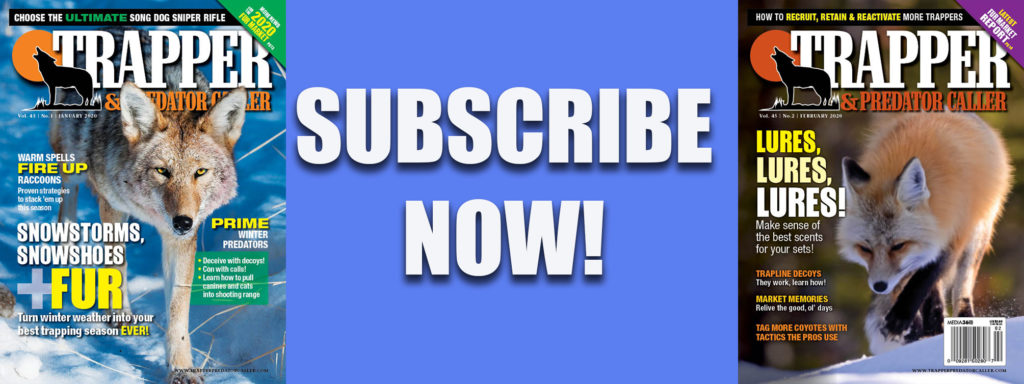
By Ted Stotler
The most important thing to remember when hunting desert coyotes is that before you hunt coyotes, you have to hunt water. Desert water sources are much fewer and farther between than in any other type of habitat. My experience has been that, in early mornings and late afternoons, coyotes are usually not far from a water source. I believe that’s because they like to tank up before and after a long night’s hunt.
Sometimes vast areas that hold a good coyote population in wet years will be left entirely to the lizards and kit foxes in dry years. The reason is that some springs are off-and-on affairs. I recall one particular valley in California’s “Lonesome Triangle” that I called several times each season year after year with consistently good results. Then one year at the beginning of a drought, the responses dropped off completely. Scouting revealed a total absence of scat where it was once plentiful. Even the usual dawn and dusk howling had stopped.
A local rancher clued me in to the fact that the wells and springs in the area had all dried up. In other areas of the country, where water sources are plentiful, a dry spring here or there might not matter. But in the desert, where surface water is scarce and scattered, this might mean a considerable area that was once alive with multiple packs will be devoid of all canines for years.
I once had a well-intentioned bird hunter show me a map that included five wells all within two miles of each other. I made the mistake of calling there cold turkey, making a stand within a half-mile of each well with no response whatsoever. At midday, I inspected each well. They were all bone dry. Coyotes will sporadically hunt areas that are devoid of water, but it stands to reason that encountering them there will be unlikely.
In the desert, regular water sources are often offered by the edge of human communities, where pet bowls and leaky faucets abound. These sources and natural springs and stock tanks will almost always have resident coyotes. The most reliable methods for scouting water are topographical maps, questioning local residents and boots on the ground just prior to the actual hunting of the area.
While the key to locating coyotes might be water, other essentials must also be in place. Probably the most important after H2O is cover. There must be enough brush or trees to shield coyotes from sun, wind and rain. Heavier chaparral is also more hospitable to abundant and varied prey populations.
When you have the above listed habitat requirements in the same area, you will have coyotes sooner or later. These factors are more important than other traditionally stressed factors like scat and twilight howling. Oftentimes in over-called areas, coyotes stop howling entirely. When it comes to scat, this type of evidence can be scattered far and wide since desert hunting grounds tend to be expansive.
If you are new to an area, there are two basic scouting methods that are helpful. The first is to scout for a few days paying attention to reliable calling sites, shadow angles at morning and afternoon, and wind patterns that will dictate the best path of approach. The second method is to just begin in the morning by picking out seemingly likely spots to call. Then at midday you can scout for more carefully selected places to call that afternoon and the next morning.

